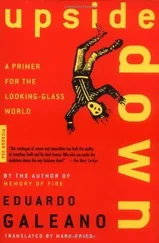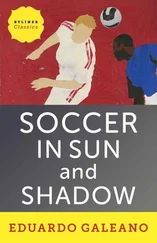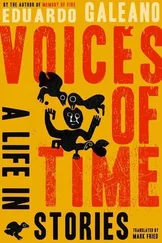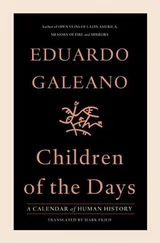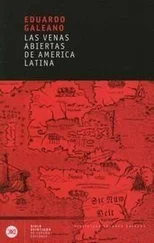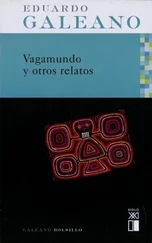Contemporary accounts do not coincide precisely with those brush-strokes.
They say the hero, Pedro, a Portuguese prince, squatted on his haunches on the bank of a stream called Ipiranga. His supper had not sat well with him and he was “doubling over to answer the call of nature,” in the words of one chronicle, when a messenger brought a letter from Lisbon. Without interrupting his efforts, the prince had him read out the letter from his royal parents, which contained certain affronts, perhaps aggravated by his bellyache. In the midst of the reading, he stood up and swore lengthily, which official history translated in abbreviated form as the famous cry:
“Independence or death!”
Thus, that morning in 1822, the prince tore the Portuguese insignia off his cassock and became emperor of Brazil.

Bearing nine years of age and eighteen names, Pedro de Alcântara Francisco Antônio João Carlos Xavier de Paula Miguel Rafael Joaquim José Gonzaga Pascoal Sipriano Serafim de Bragança e Bourbon, prince and heir to the Portuguese crown, disembarked in Brazil. The British brought him here along with all his court to keep him safe from Napoleon’s assaults. At the time, Brazil was Portugal’s colony and Portugal was England’s colony, although the latter went unsaid.
At the age of nineteen, Pedro was married to Leopoldina, the archduchess of Austria. He paid her no heed. Like many other tourists to come, he spent his time chasing dark-skinned lovelies in Rio’s blazing night.
At the age of twenty-four, he proclaimed Brazil independent and became Emperor Pedro I. Without pause, he then signed the first loan agreements with British banks. The new nation and the foreign debt were born as twins. They remain inseparable.
At the age of thirty-three, he got the crazy notion to abolish slavery. He dipped his quill in the inkpot but did not manage to sign the decree. A coup d’état left him throneless, sitting on air.
At the age of thirty-four, he returned to Lisbon and became King Pedro IV of Portugal.
At the age of thirty-six, this king of two thrones died in Lisbon and was buried there, in the land that had been his mother and his enemy.

The official history of Brazil continues to call the first uprisings for national independence inconfidencias , acts of disloyalty.
Long before the Portuguese prince declared himself emperor of Brazil, there were several failed attempts. The most notable were the Inconfidencia mineira in Ouro Preto in 1789, which died stillborn, and the Inconfidencia bahiana , which broke out in 1794 in Salvador da Bahia and lasted four years.
The only leader of the former to be hanged and quartered was a low-ranking officer, Tiradentes, the tooth puller. The other conspirators, mining barons fed up with paying colonial taxes, were pardoned.
The Bahian rebellion lasted longer and went farther. It sought not only an independent republic but also equality of rights for all, no matter the color of your skin.
After much blood was spilled and the rebellion put down, colonial authorities pardoned all but four of the leaders. Hanged and quartered were Manoel Lira, João do Nascimento, Luis Gonzaga, and Lucas Dantas. These four were black, the sons or grandsons of slaves.
And there are those who believe justice is blind.
RESURRECTION OF TÚPAC AMARU

Túpac Amaru, the last king of the Incas, fought the Spaniards for forty years in the mountains of Peru. In 1572, when the executioner’s ax severed his neck, Indian prophets announced that one day the head would rejoin the body.
And it did. Two centuries later, José Gabriel Condorcanqui claimed the name waiting for him. Transformed into Túpac Amaru, he led the largest and longest indigenous rebellion in the entire history of the Americas.
The Andes were on fire. From the summits to the sea, up rose the victims of forced labor in the mines, plantations, and workshops. The rebels threatened the colonial dinner plate with victory after victory as they advanced at an unstoppable pace, fording rivers, climbing mountains, crossing valleys, taking town after town. They were on the verge of conquering Cuzco.
The sacred city, the heart of power, lay before them: from the heights they could see it, they could taste it.
Eighteen centuries had passed since Spartacus had Rome within his grasp, and history repeated itself. Túpac Amaru decided not to attack. Indian troops, led by a chief who had sold out, defended the besieged city, and Túpac did not kill Indians. Not that, never. He knew it was necessary, there was no other way, but. .
While he vacillated from yes to no to who knows, days and nights passed and Spanish soldiers, lots of them and well armed, were making their way from Lima.
In vain his wife, Micaela Bastidas, who commanded the rearguard, sent him messages:
“You have to bring these sorrows to an end. . ”
“I have not the patience to put up with all this. . ”
“Many times I have told you not to waste time in those towns. . ”
“I have sent you plenty of warnings. . ”
“If it is our ruin you want, just lie down and go to sleep.”
In 1781, the rebel leader entered Cuzco. He entered in chains, under a hail of stones and insults.

In the torture chamber, the king’s envoy interrogated him.
“Who are your accomplices?” he asked.
And Túpac Amaru answered:
“Here there are no accomplices but you and I. You the oppressor and I the liberator, we both deserve death.”
He was sentenced to die by being quartered. They tied him to four horses, his arms and legs forming a cross, and his body did not break. Spurs dug into the bellies of the horses, which lurched in vain, and his body did not break.
They turned to the executioner’s ax.
It was a time of long drought in the Valley of Cuzco and the noon was ferociously bright, but the sky suddenly grew black and cracked and unleashed one of those downpours that drown the world.
The other rebel leaders, male and female, Micaela Bastidas, Túpac Catari, Bartolina Sisa, Gregoria Apaza. . were quartered. And through the towns that had rebelled, their remains were paraded, then burned, and the ashes thrown to the wind, “so that no memory of them shall remain.”

In 1776, the independence of the United States foreshadowed what would occur later on from Mexico south.
To remove any doubts about the place of the Indians in the new nation, George Washington proposed “the total destruction and devastation of their settlements.” Thomas Jefferson voiced the opinion that “this unfortunate race has justified its extermination.” And Benjamin Franklin suggested that rum could be the “appointed means” to get rid of the savages.
To remove any doubts about the place of women, the Constitution of the State of New York added the adjective “masculine” to the right to vote.
To remove any doubts about the place of poor whites, the signatories to the Declaration of Independence were all rich whites.
And to remove any doubts about the place of blacks in the newborn nation, six hundred and fifty thousand slaves remained enslaved. Black hands built the White House.
Читать дальше






